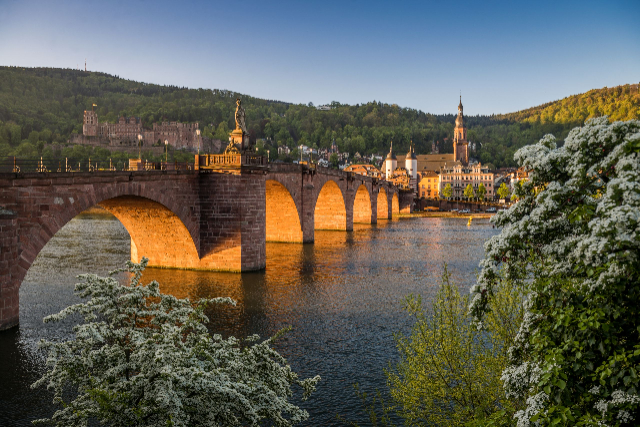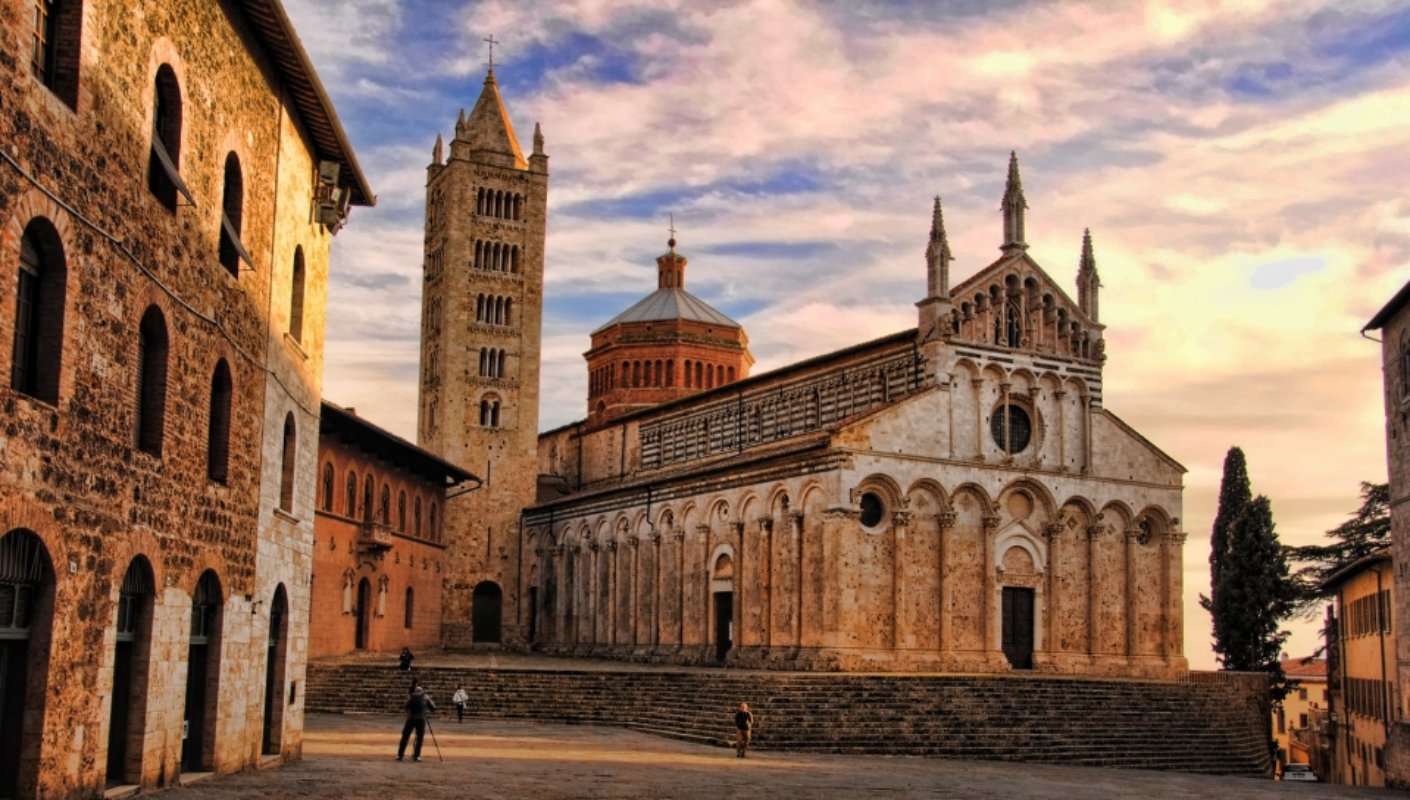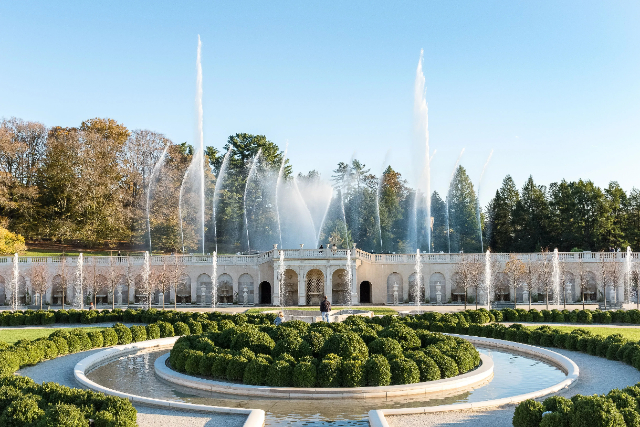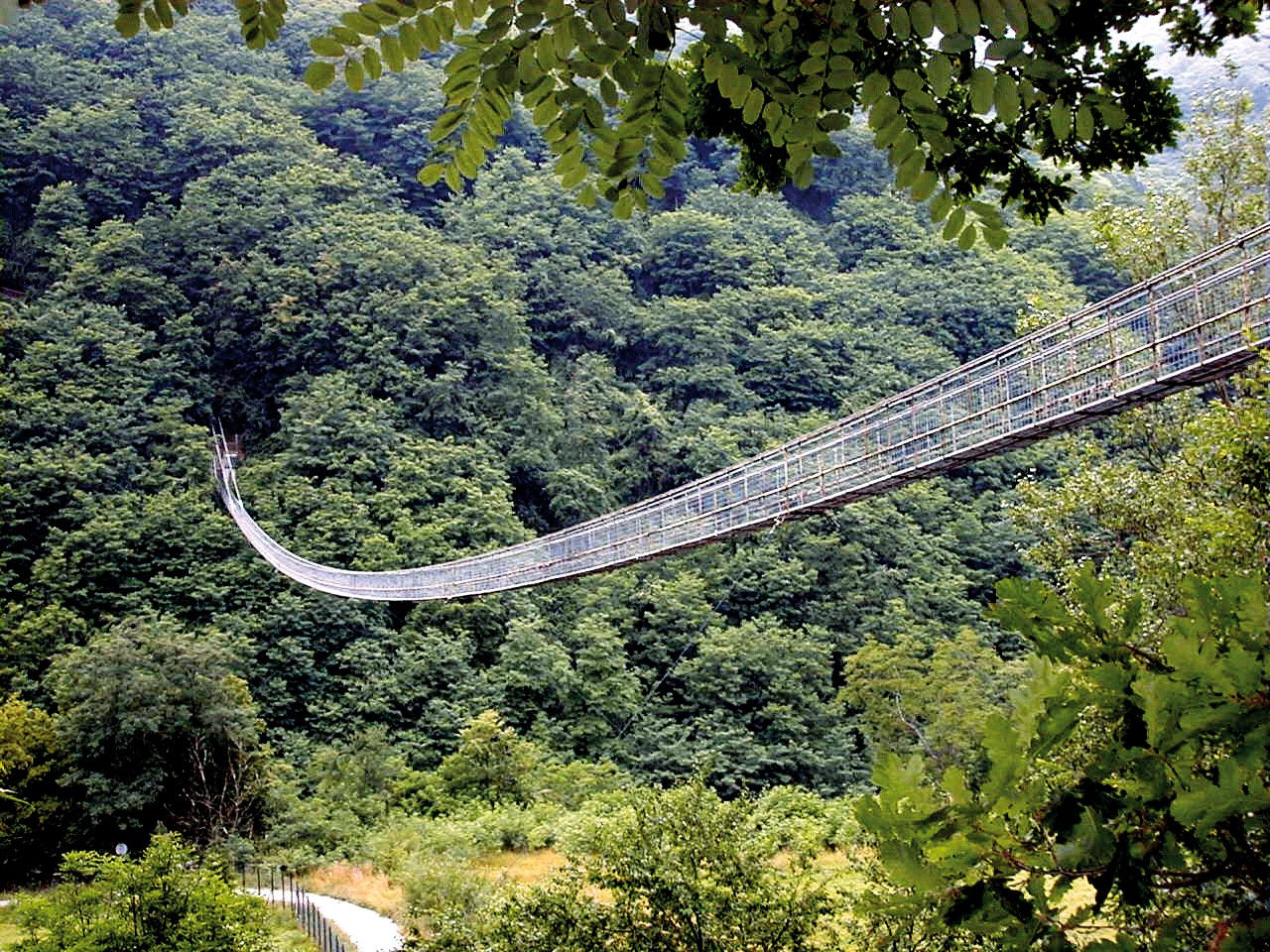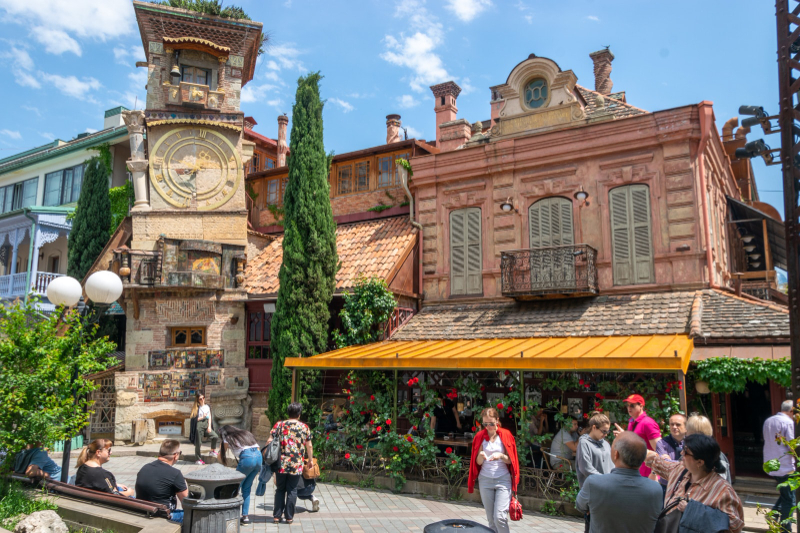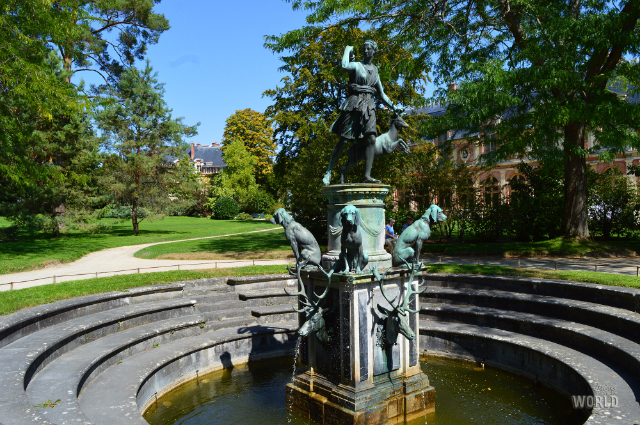Built at the end of the 18th century, the stone arch bridge is one of Heidelberg’s greatest tourist attractions. The structure was built on the foundations of eight earlier bridges that have been built here since the early Middle Ages.
It is made of Neckar valley sandstone and was built by Elector Karl Theodor in the 18th century.
It connects the old town with the banks of the Neckar at the eastern end of the Neuenheim district. The predecessors of today’s Old Bridge were made of wood. Since they were repeatedly destroyed by wars and floods, Elector Karl Theodor had a stone bridge built over the river (1786-1788). On the city side, the medieval bridge gate, part of the former city wall, has been preserved.
On March 29, 1945, one of the last days of the war, German soldiers blew up the Heidelberg Neckar Bridges and the Old Bridge. Thanks to a donation campaign that was lively supported by the citizens, reconstruction could begin on March 14, 1946. The inauguration took place in July 1947.
There are two sculptures on the bridge, one is Elector Karl Theodor and the other is the Roman goddess Minerva (Greek: Pallas Athene).
The Elector’s monument stands closer to the southern bank of the Neckar. The figures depicted on the two-tier plinth around the monument symbolize the most important rivers in the areas ruled by Karl Theodor: Rhine and Moselle, Danube and Isar.
The promotion of art and science was very important to the elector. That is why the second monument is dedicated to the goddess of wisdom.
The bridge patron Johannes Nepomuk is depicted on the north bank of the bridge.
